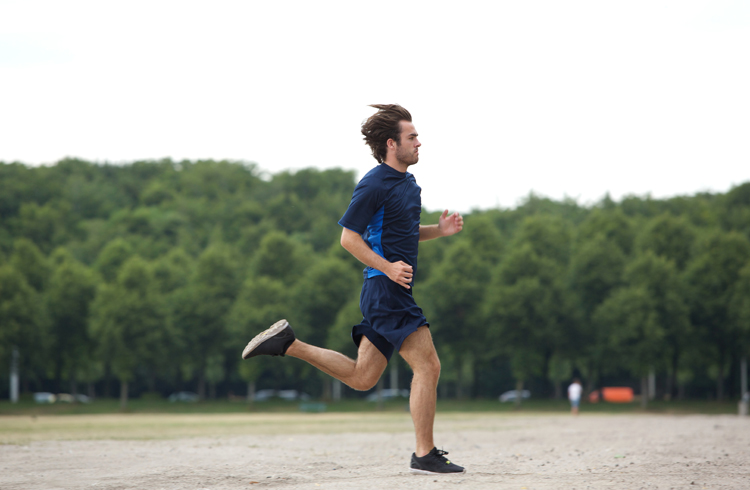Head and neck
Don’t – rock or bob your head backwards and forwards or from side to side, screw your face up or strain your neck.
Do – relax from the eyebrows down. Keep your head level and still, your eyes looking forwards towards an imaginary horizon.
Try – Practising running relaxed at the end of a run. Spend the final mile consciously relaxing the muscles in your face, head and neck.
Shoulders
Don’t – hunch them up when you run, draw them up towards your ears or roll them around.
Do – Relax your shoulders and allow them to hang low and loose. Keep them moving freely with the lateral movement of your arms.
Try – On a run raise and lower your shoulders, breath out and roll your shoulders gently if you feel tension rising.
Arms and hands
Don’t – allow your arms to cross in front of your body with each stride or bring them high towards your face. Don’t clench your fists or let your hands flap.
Do – Your arms and legs work together in opposite to keep you balanced and moving forwards. An effective arm action also keeps your legs in check! Try running moving your arms slowly and your legs quickly – its very tricky. Swing your arms laterally backwards and forwards by your sides with roughly a 110-120-degree bend at the elbow. Hold your hands relaxed by your sides. Imagine holding eggshells that you don’t want to break.
Try – allow your arms and hands to drop and roll when you run. Shake them out to ensure they are relaxed before putting them back into lateral motion.
Torso
Don’t – Slouch, twist, lean or dip. Your torso provides stability and strength to your running posture.
Do – Run tall. Extend upwards through your spine as you run. Keep upright with your hips, spine, neck and head in a tower like line. Allow your chest to expand as you breath. Keep a strong torso with subtle pulling ‘in through your belly button’ to keep your core muscles stable.
Try – a regular pilates class to improve your conditioning and control, especially learn how to master the finer muscle movements.
Hips
Don’t – let your hips sink or your pelvis drop or tilt. When runners are tired the first sign of poor form is sinking hips. Low hips equal a shortened stride and lower leg lift. Rocking hips should be avoided!
Do – keep your hips high and aligned front facing. Pelvic stability is really important for good running form. Your hips and torso form the centre of this. Keep your running centre of gravity high to maintain your stride length. Keep your hips stable to give a strong platform to drive from.
Try – Wearing an imaginary baseball cap that sits an inch above your head when your running. Stretch vertically up elongating your spine and raising your hips to put your head in the high hat!
Legs
Don’t – let them flail about, flick out wide, cross over, shuffle, or over stride. Avoid uber low and ultra high knee pick-ups, or excessive hip flexion.
Do – Legs do different things depending on the type of running you’re doing. Stride frequency (cadence) and stride length both influence running speed. For shorter, faster running look for a high knee drive, a powerful leg extension, a long reach down with the leading foot and a fast clawing action over the ground with a speedy pull through and return of the opposite leg. For endurance and efficiency knee lift isn’t as high or as powerful but remains linear with hips driving thighs through under the body and extending with a relatively lower foot carriage under the body.
Try – short fast sprints. Over 100m accelerate to top speed. As you do focus on your legs driving through, staying tidy and linear. Get someone to video you to check yourself out!







